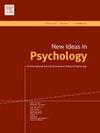Refining the prevalence inflation hypothesis: Disentangling overinterpretation from self-fulfilling prophecies
IF 2.9
3区 心理学
Q2 PSYCHOLOGY, EXPERIMENTAL
引用次数: 0
Abstract
The prevalence inflation hypothesis suggests that mental health awareness efforts can lead to an increase in rates of mental illness, first because awareness efforts encourage individuals with subclinical levels of distress to see their problems as mental illnesses (“overinterpretation”), and second because these individuals may then think and act in ways that promote actual mental illness (“self-fulfilling prophecy”). In this discussion paper, I argue that these two components are best understood—and best studied—as two distinct hypotheses. I present each hypothesis, discuss early evidence regarding each one, and outline the benefits of studying them independently.
完善普遍通货膨胀假说:将过度解读与自我实现的预言区分开来
患病率膨胀假说认为,提高心理健康意识的努力可能会导致精神疾病患病率的上升,这首先是因为提高意识的努力会鼓励那些处于亚临床痛苦水平的人将他们的问题视为精神疾病("过度解读"),其次是因为这些人可能会以促进实际精神疾病的方式思考和行动("自我实现的预言")。在这篇讨论文章中,我认为最好将这两个因素作为两个不同的假设来理解和研究。我将介绍每种假说,讨论有关每种假说的早期证据,并概述独立研究这两种假说的好处。
本文章由计算机程序翻译,如有差异,请以英文原文为准。
求助全文
约1分钟内获得全文
求助全文
来源期刊

New Ideas in Psychology
Multiple-
CiteScore
4.80
自引率
3.80%
发文量
37
期刊介绍:
New Ideas in Psychology is a journal for theoretical psychology in its broadest sense. We are looking for new and seminal ideas, from within Psychology and from other fields that have something to bring to Psychology. We welcome presentations and criticisms of theory, of background metaphysics, and of fundamental issues of method, both empirical and conceptual. We put special emphasis on the need for informed discussion of psychological theories to be interdisciplinary. Empirical papers are accepted at New Ideas in Psychology, but only as long as they focus on conceptual issues and are theoretically creative. We are also open to comments or debate, interviews, and book reviews.
 求助内容:
求助内容: 应助结果提醒方式:
应助结果提醒方式:


